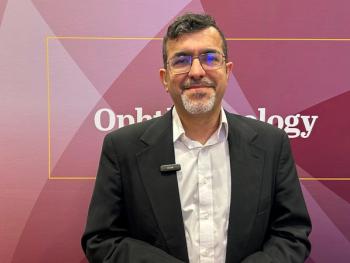
Top ophthalmic challenges in 2019
Ophthalmology Times’ Editorial Advisory Board members share their thoughts on what to watch in year ahead
As 2018 ends, members of the Ophthalmology Times' Editorial Advisory Board share their thoughts on the most important advances and innovations over the past 12 months and the challenges to be faced in the new year.
As 2018 comes to its end, members of Ophthalmology Times’ Editorial Advisory Board share their perspectives on the most important ophthalmic advances over the past 12 months and the challenges to be faced in the new year.
Reflecting on the past year, what advances and innovations come to mind?
DR. CULBERTSON: There were several notable advances in the past year, including those involving the femtosecond laser adjustable IOL (Perfect Lens), topical treatments for the reduction and/ or prevention of cataracts, low-dose atropine for retarding myopia progression, and FDA approval of ReLEx SMILE (Carl Zeiss Meditec) for correction of myopic astigmatism.
The challenge of bringing diabetic retinopathy surveillance and treatment to rural areas is being addressed through the combination of fundus photographs in health clinics and artificial intelligence screening of these photographs. Deep learning of large numbers of retinal photographs has proved to be as accurate as ophthalmoscopy by ophthalmologists in detecting diabetic retinopathy.
Similarly, machine review of retinal and nerve fiber layer OCT images will provide accurate and rapid diagnosis of both retinal and glaucoma-based disorders. These advances should save time and money for patients and ophthalmologists and supplement both in-office and telemedicine settings for providing efficient and appropriate patient care.
To me, however, the most interesting development is the progress that has been made in endothelial cell layer repopulation with both injected cultured endothelial cells as described by Kinoshita et al. and the Descemet stripping only procedure. Both approaches may be enhanced by the adjunctive use of rho-kinase inhibitors that may encourage both proliferation and migration of endothelial cells.
The possibility of enhancing attachment of injected cells selectively to the back of the cornea using a corneal magnet and endothelial cells as described by Goldberg et al. holds interesting potential.
Alternatives on this theme that involve plating cultured endothelial cells on autologous Descemet membrane or other membranes that are placed on the back of the cornea “DMEK-style” is also interesting.
The progress that has been made in treating endothelial dysfunction and corneal edema over the last 10 to 15 years has been phenomenal and will continue to offer fairly non-invasive alternatives providing rapid restoration of vision.
DR. DUGEL: This past year has been a banner year for retina and next year promises to be even better. The most important advancements for treatment of neovascular age-related macular degeneration (nAMD) have been with the next generation anti-VEGFA drugs, led by brolucizumab (Novartis), a single-chain antibody fragment that achieved positive results in the phase III HAWK and HARRIER trials.
Faricimab (Roche/Genentech), a unique and elegant bi-specific drug that simultaneously inhibits VEGFA and angiopoietin-2 is also advancing. In addition, conbercept, the first Chinese drug, may make its way to the United States with the initiation of the Panda trial. Conbercept is a fusion protein with impressive binding characteristics.
For dry AMD, the complement C3 inhibitor, APL-2 (Appelis), showed impressive results for slowing the progression of geographic atrophy in a phase II trial, but with a side effect of increasing choroidal neovascular membrane conversion that is concerning.
The phase III trial for APL-2 will be illuminating. The next-generation anti-VEGFA drugs are also exciting potential new treatments for diabetic macular edema/ diabetic retinopathy (DME/ DR) as is AKB-9778 (Aerpio Pharmaceuticals), a subcutaneously administered Tie2 activator, which may also have benefit renal function.
DR. MALONEY: This year has brought a slowdown in private equity activity. Sophisticated financiers have discovered, once again, that it is hard for anyone to run a practice better than the owner-ophthalmologists. I still think the future of private equity is bright, but good deals will be done at lower valuations with shared governance that extracts the more limited value from economies of scale rather than monetizing an income stream.
DR. MCDONNELL: The launch of voretigene neparvovec-rzyl (Luxturna, Spark Therapeutics) for the treatment of confirmed biallelic RPE65 mutation-associated retinal dystrophy was an exciting advance because it represents proof-of-concept of gene therapy for eye disease. While only a limited number of people are affected by the condition for which it is indicated, I think this first gene therapy gives us a window into exciting future therapies for ocular disease.
DR. OLSON: The entire field of post-refractive IOL adjustment is heating up and, I predict, will be a game-changer. The Light Adjustable Lens (RxSight), approved towards the end of 2017, is showing impressive results. In particular, with the opportunity to do custom spherical aberration adjustment with guaranteed centration, it would appear to offer a superior depth of focus approach for presbyopia. In addition, refractive index shaping is moving along nicely with Perfect Lens soon to show efficacy in humans, and the Rochester variation is not far behind.
The future will be less about surgical accuracy and more about adjustment postoperatively. With all of the current unknowns, such as effective lens position and posterior cornea impact, postoperative adjustment will guarantee refractive precision that will take us to a new level.
DR. PACKER: Although it cannot be considered new technology because its origins date back to the beginning of the last decade, the long-awaited FDA approval of the Visian Toric ICL (STAAR Surgical) represents a significant step forward for U.S. refractive surgeons.
Outside the United States, the increased adoption of the EVO Visian ICL (STAAR Surgical) with its innovative central port design that eliminates the requirement for preoperative YAG iridotomies reflects both outstanding safety and “optically superb correction of relatively high degrees of ametropia” as noted by McLeod in a published editorial [McLeod SD. JAMA Ophthalmol. 2016;134:494-495].
Once EVO is approved here, I believe we will witness its utilization increase here as well and across a broader range of refractive errors, including low to moderate myopia.
In addition, STAAR has mentioned that there is a prospective clinical evaluation of an extended depth of focus ICL, which suggests a potential new entrant in the quest for a safe and effective surgical treatment of presbyopia. Given the retrenchment we have seen this year among presbyopia devices, this is welcome news.
DR. RITCH: Advanced imaging modalities that allow early detection of glaucoma have been an important advance because early detection is the cornerstone for appropriate treatment and management of glaucoma. Ophthalmic imaging has come a long way from disc photos to OCT for detecting and documenting glaucomatous damage. The finer and more accurate the detection tool, the higher the chance of detecting disease in its very early stages with the potential to halt its progression.
Functional imaging that can identify malfunctioning retinal cells before they are lost is a new development in this domain. A combination of highly sensitive anatomical imaging and functional imaging will make the ideal ophthalmic imaging tool to detect glaucoma in its earliest stage.
DR. SADRI: Several recent innovations will advance cataract surgery by making our procedures faster and better with improved outcomes. They include the miLOOP/ miPORT (IanTech), Zepto (Mynosys), and the Light Adjustable Lens. In addition, the iLUx Device (Tearfilm Innovations) is an important new option for treating meibomian gland dysfunction.
What do you consider as some of the top remaining challenges?Cataract surgery/Refractive cataract surgery
DR. CULBERTSON: An ongoing challenge is the necessity to achieve the refractive target (usually plano) when implanting a multifocal IOL. In contrast to monofocal IOL surgery, small amounts of residual spherical or astigmatic refractive error after multifocal IOL implantation result in substantial patient dissatisfaction postoperatively.
We may be at our practical limit for getting closer to this goal with present diagnostic devices and formulas because of unpredictable anterior-posterior positioning, centration, rotation, and tilt of the IOL after the healing period.
The potential ability to effect postoperative adjustment of the IOL power after stabilization of the lens position using refractive index modification of acrylic lenses with the femtosecond laser should increase patient satisfaction with all IOLs, especially multifocals.
DR. MCDONNELL: We need an accommodating IOL. Although multifocal IOLs benefit many patients, the optical aberrations associated with this type of technology tell us that multifocal IOLs are unlikely to become broadly accepted.
DR. OLSON: I believe we are starting to hit the wall for improving refractive prediction. Once intraoperative aberrometry, the effect of the posterior cornea, the latest IOL formulas, and formula customization are employed, further improvement in prediction error will increasingly add little gain for a lot of effort.
This is the reason why modalities for postsurgical refractive adjustment will be so important. Patient outcomes expectations are continuing to climb, and our demanding patients will be impatient for this next level of precision.
DR. PACKER: While the rate of cataract surgery is increasing, the proportion of refractive cataract surgery procedures, including cases involving implantation of toric and presbyopia-correcting IOLs, has remained relatively flat. These data points suggest to me that surgeons face an ongoing challenge in counseling patients regarding their options at the time of surgery.
While the profit motive has been a friend to encourage advances in IOL design and cataract extraction technology on industry’s part, it has also driven adoption of premium surgery at the practice level.
However, profit in the practice accrues primarily to owners, and the trend towards employed surgeons may be further hindering growth of the premium channel.
Practicing the art and science of refractive cataract surgery requires not only motivation, intellect, and surgical skill, but also the ability to communicate the value proposition to patients, manage their expectations effectively, and remain steadfast when problems arise.
In this world, satisfaction and success go hand in hand, but achieving both means taking necessary risks. If there isn’t an appropriate reward, those risks can appear daunting, and I will be sorry if that means many surgeons will not start down this road.
In addition, if our goal is to achieve improved outcomes, then the first step is to examine current outcomes because it is impossible to make progress without understanding the current state of affairs.
Tracking surgical outcomes should be a required element of clinical practice, but few surgeons allow time for themselves or their employees to record outcomes, and surgeons who co-manage extensively may never know their postoperative outcomes, such as their surgically induced astigmatism (SIA).
As the medical monitor of a recent clinical trial, we required participating surgeons to complete a spreadsheet to calculate their SIA. The investigators were selected because of their competence as refractive cataract surgeons, yet none had performed this exercise until it was mandated for their participation in the trial. Once the data were collected, some of the surgeons were quite surprised at the outcomes (one even insisted that we repeat the exercise).
The point is that one doesn’t know until one collects the data. It remains a major challenge to find the resources for outcomes analysis because the time is not directly reimbursed by revenue. The time and effort, however, represent an investment in the future-a future of better surgical outcomes, and we should all be willing to make that investment.
Economic, legal, and regulatory challenges
DR. CULBERTSON: One of the most important challenges is the attempt by insurers to eliminate anesthesia standby (monitored anesthesia care) in cataract surgery. Although this is commonplace in third-world countries, it does not have a place in the modern medical environment.
Cataract surgery, or any ocular surgery, is an anxiety-laced experience for patients, especially cataract patients who are typically older. Often, these individuals have fragile cardiovascular and/or respiratory status, and they must be monitored closely if given sedation to recognize and/or prevent rapid decompensation. The ophthalmologist cannot simultaneously give sedation, maintain supervision of the patient’s general medical status. and concentrate fully on the intraocular surgery. If the patient becomes anxious, disoriented, or unmanageable during surgery, the outcome could be disastrous for the eye. As a profession, we must make insurers aware of the importance of monitored anesthesia to produce an optimal result.
Cataract surgeons in the United States also continue to face regulatory, legal, and economic barriers to performing bilateral same day cataract surgery in the United States. Bilateral surgery has been performed in Canada and at Kaiser Permanente Northern California without complications that are related to same day surgery. The time and resources consumed by patients, families, and health care providers in association with cataract surgery are significant and could be consolidated by allowing same-day bilateral surgery without adverse consequences to the patient.
The tradition of separating contralateral eye surgery dates to a time when cataract incisions were large (10 mm versus <3.0 mm), the possibility of endophthalmitis was significant (1/300 versus 1/2,000 cases) and postoperative lifestyle was limited by pain and slow return of vision (1 month versus 1 day). Today, when surgery on the first eye has been uneventful and there are no predictable risk factors for complications in the second eye, it should be safe and ethical to proceed with same-day surgery in the fellow eye.
DR. OLSON: Declining reimbursement will continue to be a challenge as the technical fee will continue to be downgraded. We have been and will continue to be punished for our success with cataract surgery. There will be a push to do surgery in our clinics, and that will come with another steep cut in pay per procedure. The upside is that more surgeons will see that premium IOLs can add real value, and this technology will become an increasingly important consideration. A downside, however, will be the particularly poor reimbursement for difficult cases to the point that many surgeons will see no reason for tackling them, leaving fewer surgeons to take on more such cases at an increasing loss.
DR. PACKER: Demographics pose an ongoing challenge for the provision of high-quality, cost-effective care for cataract patients. Data show a steady increase in the incidence of visually significant cataracts as the population ages.
The increased demand for services must be met with increased efficiencies in the delivery of care, including both operational and financial aspects of clinical practice. I believe these demands are in part driving the trends towards practice consolidation and corporate ownership, which may look particularly appealing to cataract surgeons in the waning years of their careers.
For younger surgeons, the appetite for practice ownership appears to continue to wane, so that working as an employed ophthalmologist has become a more common practice model. Nevertheless, it remains to be seen if these practice models will have the necessary innovative mindset to cope with future demographic demands.
Cornea
DR. CULBERTSON: Severe progressive ulcerative keratitis remains a diagnostic and therapeutic challenge. Referral eye-care centers deal with cases in which the etiologic diagnosis is elusive, and treatment involves months of painful topical drops (e.g., fortified antibiotics and anti-Acanthamoeba agents), injections, expensive oral medications (e.g., voriconazole), and eventual high-risk keratoplasties.
The patients and their families suffer visual loss and loss of income because of visual debilitation, pain, and ophthalmologist visits. The advent of corneal crosslinking with ultraviolet light and riboflavin has offered some hope in these refractory cases for both eradicating the offending organism, including bacteria, fungi, and Acanthamoeba, as well as making the cornea more resistant to collagenase degradation melting.
Similarly, photodynamic therapy using rose bengal and green light has helped cure infectious cases resistant to conventional therapies. These options have broad application and are not dependent on the etiologic agent or stage of the disease. They can bring rapid resolution to advanced cases and could possibly be used even as initial therapy.
Glaucoma
Detecting and predicting progression
DR. RITCH: Glaucoma is a heterogeneous entity of diseases with the final pathway leading to retinal ganglion cell loss and resultant visual field loss. Due to its diverse phenotypes, stopping progression or slowing the rate at which ganglion cells are lost differ among the glaucomas and can differ from patient to patient, depending on the presence of risk factors other than IOP.
More attention to the discovery of causative genes and cellular mechanisms/pathophysiology (e.g., autophagy in exfoliation syndrome) is needed. Non-IOP-lowering treatment modalities require investigation based upon these underlying mechanisms.
Predicting which patient is “prone” to fast progression and which patient is not also is a remaining challenge. Instead of waiting to see scotoma formation on visual field testing or thinning of the retinal nerve fiber layer with OCT, it would be advantageous to know in advance which patients should be treated more aggressively and to what extent. As of now, no such algorithm exists for predicting the development or course of glaucoma in different patients with different types of glaucoma.
Addressing unmet therapeutic needs
DR. RITCH: Although the armamentarium of a glaucoma specialist is now well equipped with multiple anti-glaucoma drops, lasers, minimally invasive glaucoma surgeries (MIGS), shunts, and more invasive glaucoma surgeries, there are patients who fail every treatment and continue to lose vision. Decisions regarding which treatment to choose first, how to move from one category to another, and how to manage the challenge of treatment refractory patients is still a puzzle to solve. The development of therapies directed at risk factors other than IOP is a much-needed advance.
The ultimate goal for glaucoma patients is to restore lost vision. The complicated neural network and cellular hierarchy of the retina has made it the “mission impossible” until now. Artificial retinal implants are now available for age-related macular degeneration and retinitis pigmentosa and are still in an early age. Electric stimulation of the visual system to reverse visual field loss is just developing. The ideal strategy would be to regenerate retinal ganglion cells and guide their axons to the lateral geniculate nucleus where they synapse with the neurons leading to the visual cortex. However, it remains unknown whether stem cells are present in the lateral geniculate to enable regrowth of these neurons.
Cost barriers
DR. RITCH: The cost per bottle of new antiglaucoma medications may be as much as $400. Medication costs in the United States can be far greater than for the same medication in other countries, and many insurance companies refuse to cover many of the newer medications. The relevance of this problem becomes more pronounced when a patient does not respond to other drops market, becomes treatment-resistance, or develops an allergic reaction.
Medical therapy is not the only part of the cost of treatment that can put a burden on patients. The coverage of new surgical treatments, such as MIGS, can also be exorbitant. The hands of government are tied when it comes to negotiating prices for Medicare patients.
Refractive surgery
DR. MALONEY: One of the top challenges for refractive surgery is the need to teach a new crop of ophthalmology residents to be competent refractive surgeons in the setting of stagnant volumes. We also need to lay the groundwork for refractive surgery to become the standard treatment for poor vision, just as braces are the standard treatment for crooked teeth.
Broader integration of the ICL into refractive practice is needed because it is a better option for correcting high myopia. Answering the occasional bad press about LASIK, despite objective evidence of the remarkable safety of the procedure also remains a challenge. In addition, introduction of new procedures is challenging because modern LASIK with its outstanding results has set a high bar for entry.
Retina
DR. MCDONNELL: We need an anti-VEGF agent that can be administered just once or twice a year because the burden of monthly or bimonthly intravitreal injections for AMD, DR, and DME is simply not sustainable.
DR. DUGEL: We need treatments for dry AMD and wet AMD that give better early efficacy and better and/or sustained long-term efficacy. Treatments are also needed for DME that provide greater sustainability and efficacy in patients who are poor responders to anti-VEGFA therapy.
Practice decisions
DR. PACKER: Integrating new technology into practice requires foresight, investment, and dedication to improving outcomes. Surgeons who own and direct their own practice and surgery center have the ability to weigh and consider new opportunities and educate staff appropriately in order to make new technology a success, whether they introduce presbyopia correcting IOLs, a new electronic medical record (EMR) system or SMILE.
Employed surgeons or those serving in a corporate ownership model may have additional challenges in persuading those with the power of the purse to invest in new technology. In ophthalmology we have witnessed many amazing advances and a few notable failures.
This year, in particular, has seen retrenchment in both the correction of presbyopia and MIGS. Ophthalmologists face the challenge of thinking critically and making decisions to benefit both their patients and their practices.
Disclosures:
William W. Culbertson, MD
E: [email protected]
Dr. Culbertson is a consultant to Carl Zeiss Meditec.
Pravin U. Dugel, MD
E: [email protected]
Dr. Dugel is on the scientific advisory board for Aerpio, Novartis, and Roche/Genentech, and a consultant to Novartis, Genentech, Roche, Aerpio, and Chengdu Kanghong Biotechnology, and a minor stockholder in Aerpio.
Robert K. Maloney, MD
E: [email protected]
Dr. Maloney has no interests relevant to the subject matter.
Peter J. McDonnell, MD
E: [email protected]
Dr. McDonnell has no interests relevant to the subject matter.
Randall J. Olson, MD
E: [email protected]
Dr. Olson is on the medical advisory board for Perfect Lens.
Mark Packer, MD
E: [email protected]
Dr. Packer is a consultant to STAAR Surgical.
Robert Ritch, MD, FACS, FARVO
E: [email protected]
Dr. Ritch wishes to acknowledge Ahmad Najafi, MD, Glaucoma Research Fellow, New York Eye and Ear Infirmary of Mount Sinai, who contributed. Dr. Ritch has no interests relevant to the subject matter.
Ehsan “Ethan” Sadri, MD, FACS
E: [email protected]
Dr. Sadri is an investor in Visionary Fund, which owns equity in IanTECH, Mynosis, and RxSite.
Newsletter
Don’t miss out—get Ophthalmology Times updates on the latest clinical advancements and expert interviews, straight to your inbox.



















































.png)


